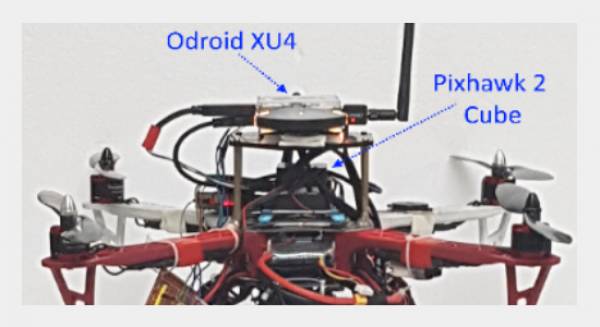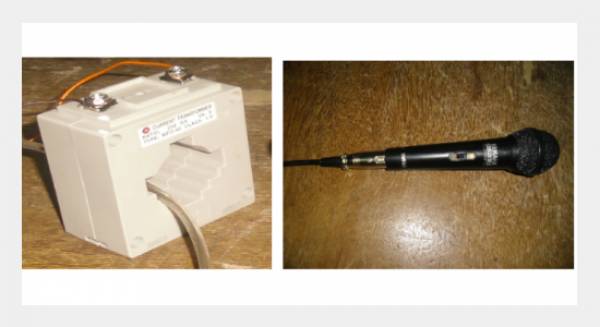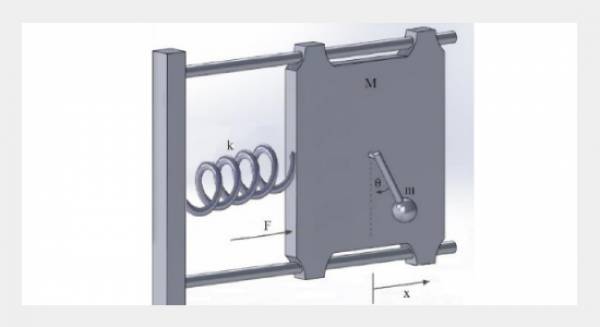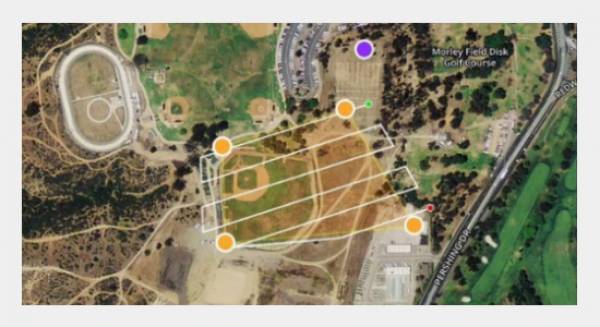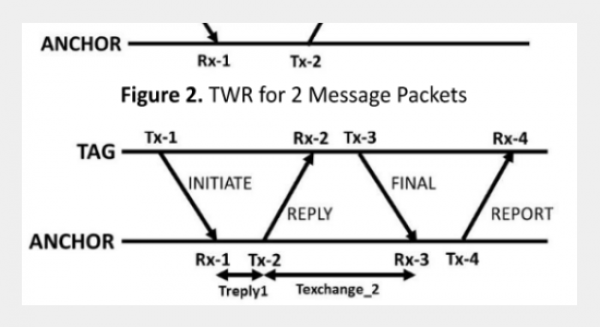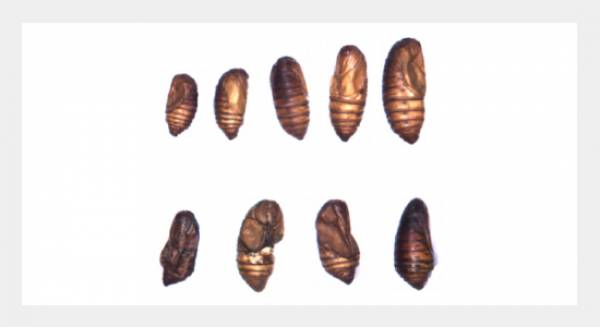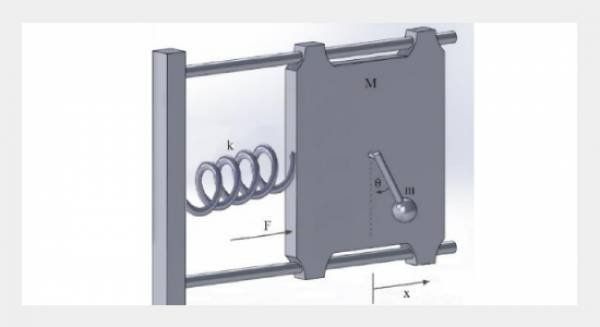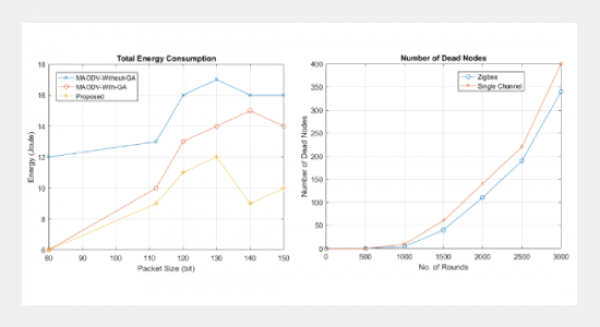Soltana Guesmi1*, Kais Jamoussi2, Larbi Chrifi-Alaoui3, Moez Ghariani2, and Kamel Baazouzi4 1National Engineering School of Sfax ENIS , 3038 SFAX, Tunisia
2National School of Electronics and Telecommunications ENET’Com, 3018 SFAX , Tunisia
3University of Picardie Jules Verne, Cuffies02880, France
4University of Batna, Algeria
Download Citation:
|
Download PDF
This paper presents an improved new control technique of the stability of the DC-DC buck converter supplied by a standalone photovoltaic system. The newly designed control based on passivity PBC can stabilize the control system by taking into account the stored energy. The system is modeled under the formalism of Euler Lagrange, to build a passive control law while guaranteeing satisfactory static and dynamic performances. Designed controllers of PBC, photovoltaic panel, and DC-DC buck converter will be simulated using MATLAB/Simulink toolbox and they will be validated by an experimental setup, which ensures the stability and the robustness of the control synthesis in different tests.ABSTRACT
Keywords:
buck converter, PBC control, Stability, Standalone PV system
Share this article with your colleagues
[1] P. Pudney, and P. Howlett, "Critical speed control of a solar car". Optimization and engineering, vol. 3, no. 2, pp. 97-107, 2002. https://doi.org/10.1023/A:1020907101234 [2] S. Guesmi, M. Ghariani, M. Ayadi, and R. Neji, "Model of stand-alone photovoltaic module". Proceedings of the International Conference on Recent Advances in Electrical Systems, 2016. [3] S. Guesmi, M. Ghariani, M. Ayadi, and R. Neji, "Complete modeling of photovoltaic module with electrical parameters,2017. [4] P. Mahajan, and A. Bhole, "Modeling of photovoltaic module. International Research Journal of Engineering and Technology (IRJET), vol. 2, no. 3, pp. 496-500, 2015. [5] C. T. Hsieh, H. T. Yau, C. C. Wang, & Y. S. Hsieh. Nonlinear behavior analysis and control of the atomic force microscope and circuit implementation. Journal of Low Frequency Noise, Vibration and Active Control, 38(3-4), 1576-1593, 2019. https://doi.org/10.1177/1461348418775891 [6] Y. E. A. Eldahab, N. H. Saad, and A. Zekry, "Enhancing the design of battery charging controllers for photovoltaic systems", Renewable and Sustainable Energy Reviews, vol. 58, pp. 646-655, 2016. https://doi.org/10.1016/j.rser.2015.12.061 [7] C. T. Hsieh, H. T. Yau, & C. C. Wang. "Control circuit design and chaos analysis in an ultrasonic machining system". Engineering Computations, 34(7), 2189-2211, 2017. https://doi.org/10.1108/EC-02-2017-0044 [8] C. T. Hsieh, H. T. Yau, , C. C. Wang, & Y. S. Hsieh. Particle swarm optimization used with proportional-derivative control to analyze nonlinear behavior in the atomic force microscope. Advances in Mechanical Engineering, 8(9), 1-10, 2016. https://doi.org/10.1177/1687814016667271 [9] K. Jamoussi, M. CHADLI, A. EL HAJJAJI, et al. Robust fuzzy sliding mode observer for sensorless field-oriented control of induction motor. In : 6th International Multi-Conference on Systems, Signals and Devices. IEEE, p. 1-7, 2009. https://doi.org/10.1109/SSD.2009.4956657 [10] S.M. Mahmoud, M. Ouriagli, L. Chrifi-Alaoui, and P. Bussy, "Robust control of nonlinear systems with both matched and unmatched disturbances." in Control & Automation (MED), 18th Mediterranean Conference on. IEEE, 2010, pp. 1043-1048, 2010. [11] H. T. Yau, C. C. Wang, C. T. Hsieh, & C. C. Cho. "Nonlinear analysis and control of the uncertain micro-electro-mechanical system by using a fuzzy sliding mode control design ". Computers & Mathematics with Applications, 61(8), 1912-1916, 2011. https://doi.org/10.1016/j.camwa.2010.07.019 [12] H. T. Yau, C. O. K. Chen, & C. L. Chen. Sliding mode control of chaotic systems with uncertainties. International Journal of Bifurcation and Chaos, 10(05), 1139-1147, 2000. https://doi.org/10.1142/S0218127400000803 [13] A. Lotfazar, and M. Eghtesad, "Application of passivity based and integrator backstepping control methods on a 5 dof robot manipulator incorporating actuator dynamics. in Automation Congress." Proceedings. World, vol. 15. IEEE, 2004, pp. 185-190, 2004. [14] T. N. Nguyen, and A. Luo, "Multifunction converter based on lyapunov function used in a photovoltaic system" Turkish Journal of Electrical Engineering & Computer Sciences, vol. 22, no. 4, pp. 893-908, 2014. https://doi.org/10.3906/elk-1210-7 [15] M. E. BA¸ SOGLU and B. Cakir, "An improved incremental conductance based mppt approach for pv modules." Turkish Journal of Electrical Engineering & Computer Sciences, vol. 23, no. 6, pp. 1687-1697, 2015. https://doi.org/10.3906/elk-1404-196 [16] R. Ortega, J. A. L. Perez, P. J. Nicklasson, and H. J. Sira-Ramirez, "Passivity-based control of Euler-Lagrange systems: mechanical, electrical and electromechanical applications." Springer Science & Business Media, 2013. [17] K. Sundareswaran, V. Vigneshkumar, P. Sankar, S. P. Simon, P. S. R. Nayak, and S. Palani, "Development of an improved p&o algorithm assisted through a colony of foraging ants for mppt in pv system." IEEE Transactions on Industrial Informatics, vol. 12, no. 1, pp. 187-200, 2016. https://doi.org/10.1109/TII.2015.2502428 [18] T. Nuchkrua, and T. Leephakpreeda, "Adaptive pid control of dc-link voltage via dc/dc buck-boost converter. "Science & Technology Asia, vol. 18, no. 2, pp. 42-53, 2013. [19] T. TMS320LF2407, and D. TMS320LF2402, 1999 Controllers datasheet. Texas Instruments, SPRS094I. REFERENCES
ARTICLE INFORMATION
Received:
2019-02-25
Revised:
2019-10-19
Accepted:
2019-12-23
Available Online:
2021-07-01
Soltana. G., Kais. J., Larbi. C.A., Moez. G. and Kamel. B. (2021) Passivity Based Control PBC Applied in the Buck Converter of the Stand-alone Photovoltaic System. Int. j. autom. smart technol. https://doi.org/10.5875/ausmt.v11i1.2127
Cite this article:
Copyright The Author(s). This is an open access article distributed under the terms of the Creative Commons Attribution License (CC BY 4.0), which permits unrestricted use, distribution, and reproduction in any medium, provided the original author and source are cited.



